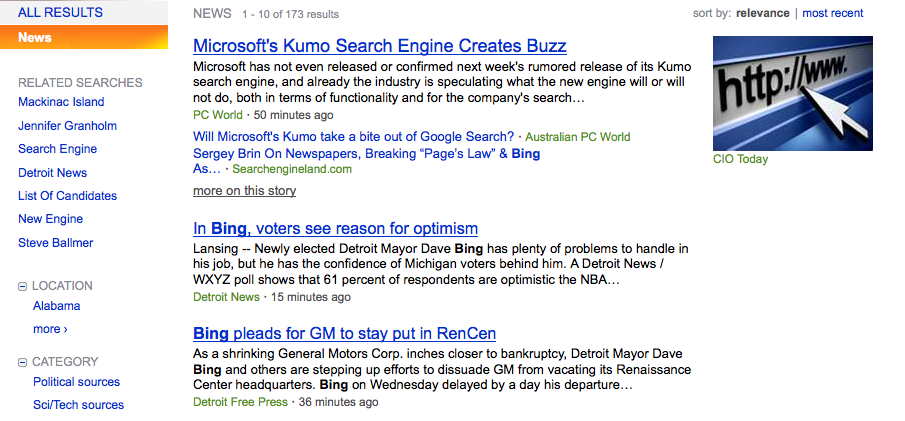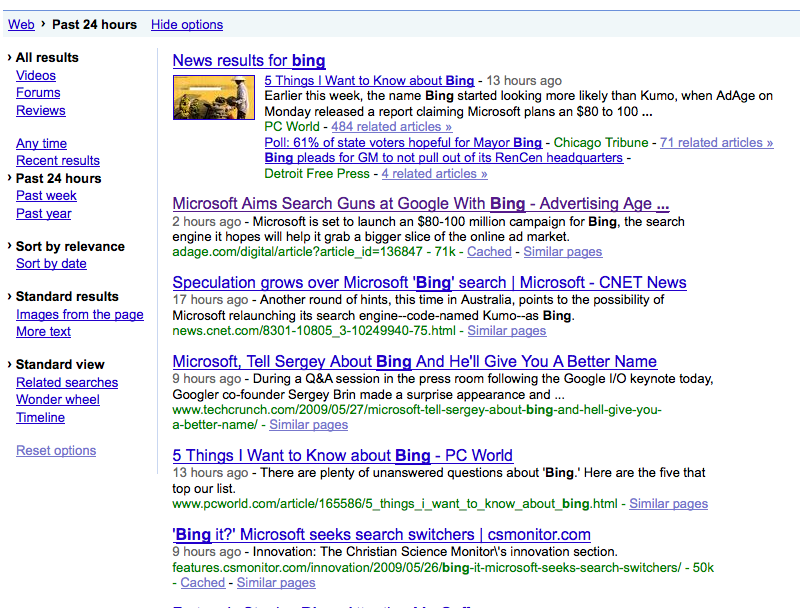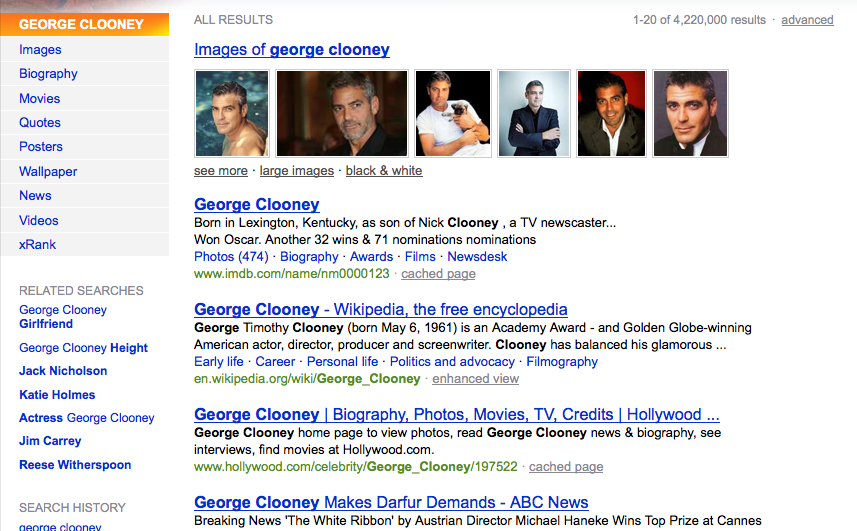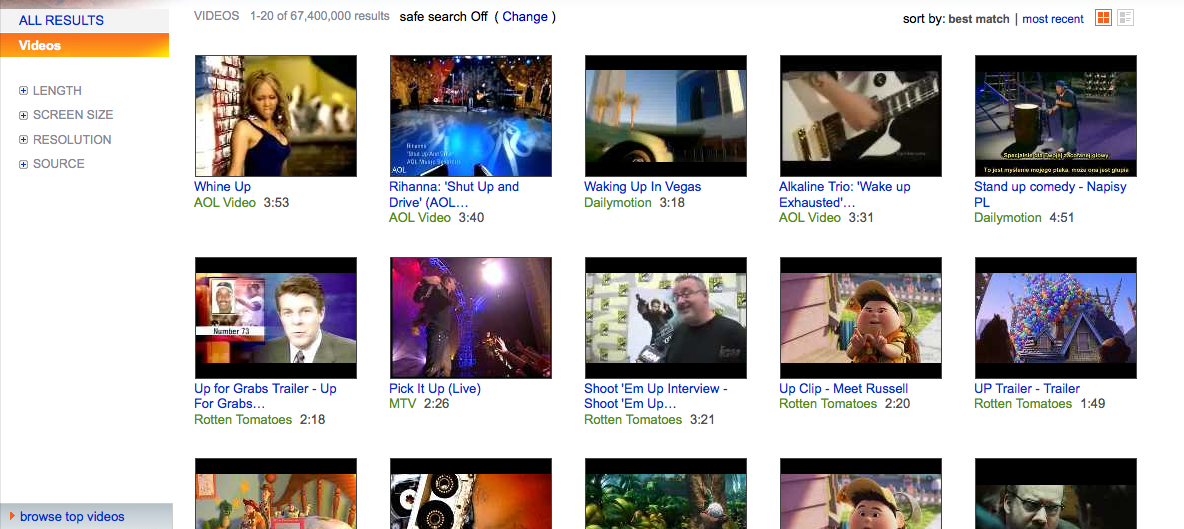Microsoft’s Bing Vs Google: Head To Head Search Results
Let’s just get it out of the way: no, Bing is not a “Google Killer.” It’s also safe to say that Microsoft doesn’t see it that way either. My understanding of what Microsoft believes it has in Bing is a much more competitive product than Live Search. I entirely agree. Over the course of the […]
Let’s just get it out of the way: no, Bing is not a “Google Killer.” It’s also safe to say that Microsoft doesn’t see it that way either. My understanding of what Microsoft believes it has in Bing is a much more competitive product than Live Search. I entirely agree.
Over the course of the next two or three weeks there will be countless articles and blog posts discussing Bing and whether or not it can dethrone Google. Microsoft has told me that the company sees Bing as a start (or restart) and that improvements will continue to roll out over time. One can be skeptical of that position or not. Regardless, Bing is a big advancement for Microsoft’s search efforts.
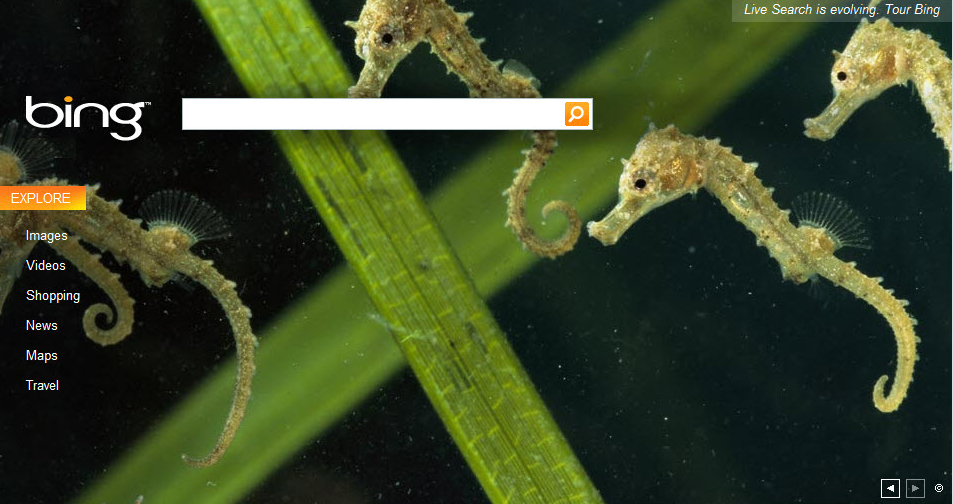
I’ve been using Bing (Kumo) off and on over that past couple of weeks. I’ve used it side by side with Google and by itself. In some cases I’ve been self-consciously testing and comparing results. At other times, I’ve simply used it to find information or navigate to desired sites.
Let me say that this post is not intended to be a detailed discussion of Bing’s “anatomy” and features. Danny and others will delve into those areas and may express different opinions and conclusions than I do here. As an aside, there are range of features that I like quite a bit; among them the “table of contents” that often appears in the upper left column (see graphic below) and the easily accessible search history, which will likely be further developed in interesting ways. (A Silverlight-enhanced version of search history adds more utility and even makes it social.)
My overall assessment is very positive. Kumo, now Bing, has performed well and I’ve been satisfied with the results. There haven’t been any significant deficiencies or missing links (so to speak). While there have been a few occasions where I’ve found Google results to be better, the substantial gap that existed between Google and Live Search is largely gone with Bing.
Microsoft has integrated the Powerset technology to varying degrees and made numerous algorithmic improvements on the “back end” that are largely opaque to me. More obvious are the interface upgrades and changes. While many people are accustomed — even habituated — to the Google UI, I appreciated the often richer visual presentation and generally “cleaner” organization of Bing SERPs.
So now you’re probably thinking will I start using Bing instead of Google?
To be candid I don’t see myself giving up Google, especially given the default Firefox browser integration. But I can also honestly say that while I almost never used Live Search except to write about it, I will indeed use Bing. Unfortunately you won’t be able to try it for yourself until next week when it goes live.
I cannot predict how you or others will react or whether Microsoft’s reportedly massive ad campaign for Bing will drive adoption. Advertising can generate awareness or curiosity but that’s about it. The bottom line is whether people find the results and their presentation to be compelling enough to actually use Bing.
So to provide a more concrete sense of Bing in advance of the launch, I conducted a range of basic searches that one might do in a given week and captured screens from both Google and Bing to offer a visual side-by-side comparison. The following are the queries that I used:
- Bing (couldn’t resist)
- Sonia Sotomayor
- George Clooney
- Hotels, New York
- Playoffs (NBA)
- Prius
- Up (the movie)
- United Airlines
- Best sushi los angeles
And away we go . . .
QUERY: “BING”
Google results:
Bing results:
Bing’s main SERP has more information about Bing Crosby the actor-singer than the Microsoft search engine. And Google does a generally better job here of surfacing results tied to the new search engine. However, if I click on “news” in the Bing table of contents, I do get the results I was looking for:
By exposing the recently introduced left-column links and drill-downs Google can also get much more specific by date or type of content:
QUERY: “SONIA SOTOMAYOR”
Bing results:
Google results:
QUERY: “GEORGE CLOONEY”
Google results:
Bing results:
The images of Clooney make the Bing SERP in this case much more interesting. In addition, the table of contents in the upper left provides quick access to more specific information about the actor without having to click back and forth.
QUERY: “HOTELS, NEW YORK”
Google results:
Bing results:
In this case, Microsoft has more or less copied the Google “10 pack” and the pages look almost identical. Clicking “Local” in the table of contents takes a user to a map-centric page, while selecting “Deals” offers data from Microsoft’s Farecast travel engine:
The integration of Farecast data and results for travel-related queries yield some of the richest and most compelling results on Bing in my view.
QUERY: “PLAYOFFS” (seeking NBA results)
Bing results:
Refining by “Playoffs NBA” (left nav) offers quick scores and schedule information:
Clicking News in the left nav offers more in-depth information including video (which can be previewed in the SERP by mousing over the thumbnails):
On Google I can do similar things, clicking through to news results or getting video (without the thumbnail preview):
QUERY: “PRIUS”
Bing results:
Google results:
The Bing page is again more compelling with the image of the car and the basic data about price and mileage, as well as local dealer listings. In addition, the TOC allows users to quickly get to the category of information they’re seeking. Although you can get to much of the same information on Google, the Bing layout surfaces much of that information more quickly.
QUERY: “UP” (the movie)
Google results:
The ad on the right allows me to watch the movie trailer by clicking the “plus box.”
I can also open the “show options” link and get to more video results:
Bing results:
Bing does a better job here, using IP targeting to create a default location (and associated movie listings) that can then be changed or made more specific. Users can click Video to see trailers and related footage.
QUERY: “UNITED AIRLINES”
Bing results:
Google results:
QUERY: “BEST SUSHI, LOS ANGELES”
Google results:
Bing results:
Some may look at the screens above and shrug. Indeed, some people have argued to me that Bing “has to be at least 50 percent better” than Google to start peeling away users loyal to Google (or Yahoo). Bing isn’t 50 percent better than Google. However, Bing does offer results that are, across the searches I conducted, highly competitive with Google and in some cases it offers features that are more user-friendly.
Given the strength of Google’s brand and its “ownership” of search Bing may struggle to make market share gains. However I predict that it will gain share. Those potential gains may come not at Google’s expense but rather from Ask, AOL or even Yahoo.
See also the companion pieces to this article:
Contributing authors are invited to create content for Search Engine Land and are chosen for their expertise and contribution to the search community. Our contributors work under the oversight of the editorial staff and contributions are checked for quality and relevance to our readers. The opinions they express are their own.
Related stories
New on Search Engine Land



